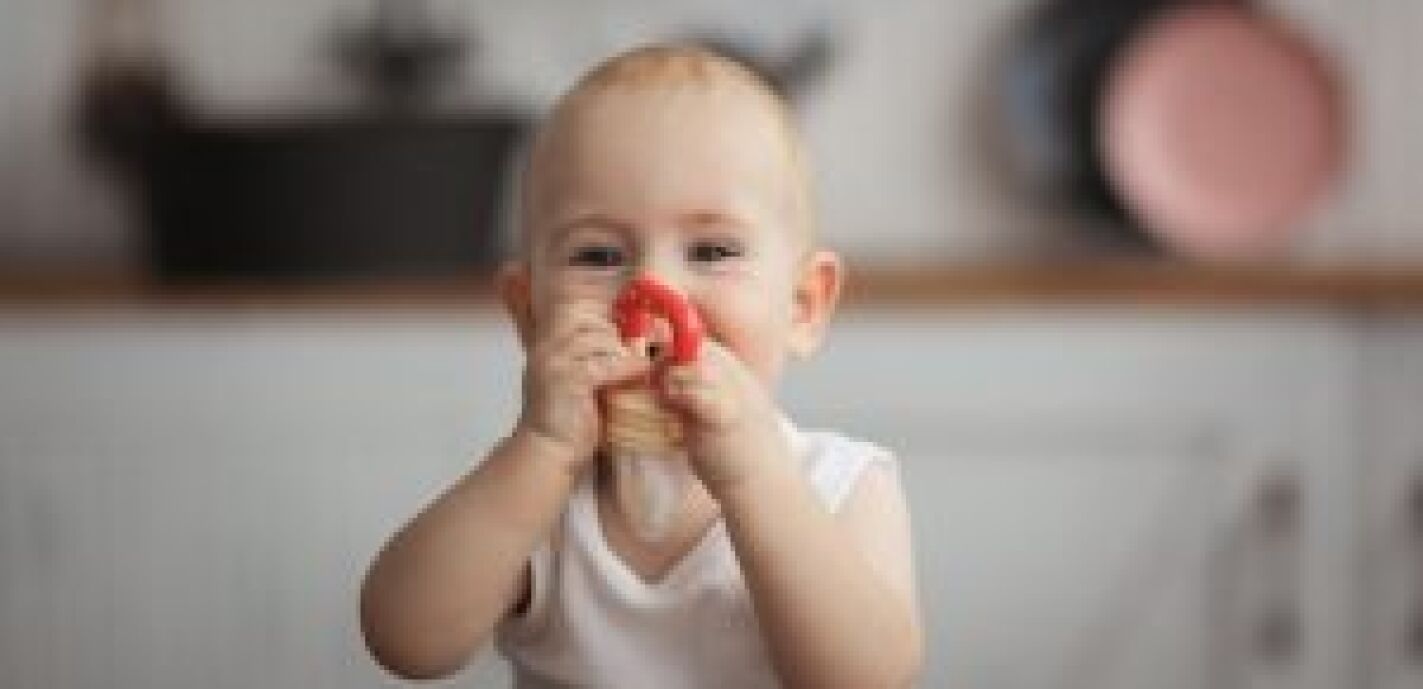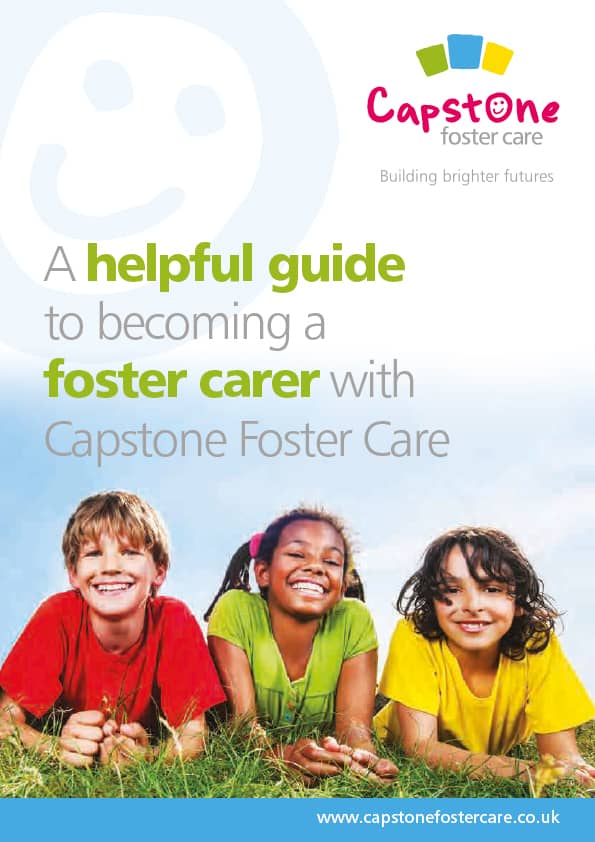


Fostering a disabled child
The role of an independent fostering agency
Can I choose who I foster?
How to foster
What are the benefits of fostering with an independent fostering agency?
What happens when a child is taken into care?
Fostering process: what happens on an initial home visit?
Can you foster if you have mental health issues?
Fostering with local authority vs independent agency
Interview: Life as a foster parent during the pandemic
Becoming A Foster Carer
Benefits of becoming a foster parent
What is a Care Leaver?
What is a Foster Carer?
What is Foster Care?
Do I become a Foster Carer?
Fostering Regulations
How much do Foster Parents get paid?
How to Foster a Child
How long does it take to become a Foster Carer?
How to foster – everything you ever wanted to know
Facts about Foster Care
What are the Foster Care requirements?
Foster Care Handbook
Foster Carer Job Description
Changing IFA - Transferring to Capstone
Fostering Definition
Foster Care Statistics
Fostering Assessment
Fostering Outcomes
Fostering Stories
Fostering Children UK
Children needing Fostering
8 reasons why a child may be taken into care
Fostering as a Career
Looked after Children
Top transferable job skills to become a foster carer
Fostering as a same sex couple
Fostering while renting
Can I foster if...?
Mythbusting the top 10 Foster Care Myths
Can I foster if I am disabled?
LGBT Fostering Mythbusting
Can I foster if I have pets?
Can I Foster A Child?
Can you Foster and Work?
Can you Foster with a Criminal Record
Fostering as a Single Parent
LGBT Family and Foster Care
Fostering across Cultures
Muslim Fostering
Christian Foster Care
Sikh
Empty Nest Syndrome and Foster Care
10 things you can do when your Children fly the nest
Can I Foster?
Fostering Babies - Myths
Focusing on Parent & Child Fostering
Fostering Siblings
Fostering Teenagers
Fostering Teenagers - Breaking down the Myths
Fostering Unaccompanied and Asylum Seeking Children
Mother and Baby Foster Placements
Private Fostering
Therapeutic Fostering - Multi-disciplinary Assessment Treatment & Therapy Service (MATTS)
Young Children Fostering Placements
Difference between short and long-term fostering
How to prepare a child for becoming a care leaver
Children who foster: impact of fostering on birth children
How to prepare your home for a foster child
10 tips for foster children’s education
How to prepare your foster child for secondary school
Tips for coping when foster placements end
Tips for foster parents during Coronavirus
What happens if foster parents get divorced?
5 ways to manage Mother’s Day with foster children
Tips for managing foster children’s bedtime routines
How to handle foster child bullying
Fostering allowances and the gender pay gap
Tips for keeping foster children safe online
How to adopt from Foster Care
5 ways to manage Father’s Day with foster children
8 most common fostering challenges
Supporting foster children’s contact with birth families
How to deal with empty nest syndrome
How to recognise signs of depression in foster children
Can you take a foster child on holiday?
Tips and advice on fostering with a disability
10 tips on connecting with your Foster Child
Fostering versus Adoption - What's the difference?
How Fostering can change a future
How to adopt from Foster Care
How to encourage children to read in Foster Care
How to prepare a Foster Child's bedroom
Online grooming - unwanted contact and how to identify it
Reading and storytelling with Babies and young Children
Supporting Children's Learning
Technology and Internet Safety advice
The 20 most recommended books Foster Carers and young people should read
The impact of early childhood traumas on adolescence and adulthood
Tips for coping with attachment disorders in Foster Children
Tips for supporting reunification in Foster Care
Together for a better Internet - Web Safety for Foster Children
What is sexual abuse and sexual violence
Foster Child behaviour management strategies
Foster Parent Advice: What to expect in your first year of fostering
Capstone's twelve tips at Christmas
10 celebrities who grew up in Foster Care
Celebrating our Children and Young People
Could Millenials be the solution to the Foster Care crisis?
Do you work in Emergency Services?
Form F Assessor and Assessment Training
Foster Care Fortnight
Improving Children's Welfare - Celebrating Universal Children's Day
It's time to talk about Mental Health and Foster Care
New Year - New Career - Become a Foster Carer
Promoting the rights and wellbeing of persons with Disabilities
Refugee Week
Young people and Mental Health in a changing world
Young People Charities
A new study from the Centre for Child and Family Justice Research at Lancaster University and the Nuffield Family Justice Observatory has thrown new light on the subject of babies in foster care. Focusing on researching infants under one week old who have been taken into care, the study revealed that the number of newborns in care doubled in the years between 2007/8 and 2016/17.
While the findings in this report provide “the first national estimate of the number, case characteristics and legal order outcomes, for newborns subject to care orders,” it has the positive effect of providing a critical discussion for further consideration and development by family justice stakeholders. These stakeholders include fostering agencies, local authorities, and foster carers.
A very big question is what does it mean to foster carers and their agencies or authorities that the number of babies under seven days old taken into care has doubled since 2007/8.
In 2007/8, there were care proceedings for 1,039 newborns in the UK. This comprised 32% of all infant care proceedings under one year old. In 2016/17, the number had risen to 2,447 newborns, 42% of the infants under a year old involved in care proceedings.
To look at what this means in terms of the overall population, in 2007/8, 15 babies out of 10,000 live births were subjected to care proceedings when they were born. In 2016/17, the number of newborns who were subjects of care proceedings had risen to 35 babies in every 10,000 live births.
Capstone Foster Care believes that every child deserves a future. We work every day to give children a bright and fulfilling life. Toward this goal, our experts keep up with the latest studies so that we know how to respond with the services we offer and the way we work with our team of foster carers. These studies range from the latest in child pedagogy to population statistics pertinent to society’s composition of children.
According to the government of the UK, in the year ending 31 March 2017, about 5% of the children in public care are under the age of one. Given that there were 72,670 children in foster care in the nation at that time, this means that there would have been approximately 3,630 babies in the foster care system. For the same time period, 13% of the children in care were between 1 and 4 years old. Most of them (39%) were 10 to 15 years old, 23% were 16 or over and 19% were between 5 and 9 years old.
This means that when potential new foster carers start the application process, one of the pieces of information that is transmitted is that “fostering often involves caring for small babies” is actually a myth. There is a focus on the need for foster parents who can look after a parent and child. This is a special form of fostering where a parent (or parents) are placed with their baby or toddler so that the parent can learn essential parenting skills and be assessed on those skills. At the same time, the baby is protected from parental mistakes. The placement is short term.
The study on the statistics regarding newborns in care captured Capstone’s attention. To understand the study and its limitations and ramifications, it helps to know the way that it was structured and what exactly it looked at.
First of all, the study defined a newborn as an infant aged less than seven days old and an infant as a child aged less than one year old. Armed with this approach, the researchers used data from 2007/08 to 2016/17 from the Children and Family Court Advisory and Support Service (Cafcass).
Cafcass represents children in family court cases in England. The primary role Cafcass plays is to “put children’s needs, wishes and feelings first, making sure that children’s voices are heard at the heart of the family court setting, and that decisions are made in their best interests.” Cafcass is independent of courts, social services, education and health authorities and all similar agencies and it operates within the law set by Parliament in the Criminal Justice and Court Services Act 2000 and under the rules and directions of the family courts.
The study used the Cafcass data to find the first estimate of the proportion of care proceedings for infants in England specifically issued for newborns, narrowing the data to all s.31 public family law cases in England between 1 April 2007 and 31 March 2017. Population estimates and live birth data produced by the Office for National Statistics (ONS) were also used. This made it possible to calculate incidence rates according to year and children’s ages.
When a child comes to the attention of the local authority, the authority will seek a court order if it seems that the child is not receiving reasonable care from a parent, thus causing the child significant harm. It is the court that determines whether the child is suffering harm. The local authority receives the need for attention from several sources. Friends and neighbours, educators, medical professionals, or the police are all obvious sources of information when a family home appears to be a home where the child is at risk.
When an investigation is launched, there is a process where the fine line between protecting the child and respecting the family unit is walked.
To further understand what is involved in care proceedings, it is helpful to know a little bit about the Section 31 proceedings. Section 31 of the Children Act 1989 is known as the Care Order and it permits the court to place a child in the care of a local authority which then shares parental responsibility with the child’s parents. In order to take this action, the court must be satisfied that “harm, or likelihood of harm, is attributable to … the care given to the child, or likely to be given.”
In some cases, there can be an interim care order that can last for up to eight weeks, during which time the child’s home circumstances are further investigated. Such an order is issued for the same reasons as a care order. That is, if the child appears to be at risk of suffering significant harm because the parental care provided is below a reasonable standard, protection for the child is essential.
Separating a child from his or her parents calls for due diligence and must be in line with Article 8 of the Human Rights Act 1998 which means that any interference in family life must be motivated by protecting the welfare of the child and must be proportionate. It is not designed to punish parents but to protect the child.
When the proceedings involve assessing the situation for a newborn child, special care must be taken so that the parents are given the chance to present their side of the situation. This means that local authorities must have a clear and timely plan in place so that the parents can be ready for the care proceedings when the baby is born and have had time to seek legal advice.
There are several outcomes to the proceedings. The baby could be removed from the parents. If that happens, the newborn is placed in a residential placement, in a parent and child foster placement, or with relatives. During this time, there is ongoing assessment of the parents’ ability to care for the child.
With reference to harm, it is defined as “ill-treatment or the impairment of health or development,” which encompasses physical, intellectual, emotional, social or behavioural development. Health can refer to physical or mental health and ill-treatment “includes sexual abuse and forms of ill-treatment which are not physical.”
The process is thorough, and it is taken seriously and involves a committee and allows the parents to participate.
You may wonder how a parent’s ability to care for a child prior to birth can be subject to assessment and your first thought might be that the parents have a history of not providing sufficient care to previous children. The study reported that 47% of the newborns taken into care had older siblings who had been subject to care proceedings. These newborns are referred to as subsequent infants. This means that 53% of newborns had parents who had not previously been assessed for their ability to care for a child.
The question then arises about the claim that the newborn may suffer significant harm while in the care of his or her parents. If the court does not have a previous set of care proceedings for relevant history and the window for pre-birth assessment of their ability to care for a child is short, how can the newborn be considered to be at risk? These are the type of questions that challenge care professionals as well as the families.
As it is now, there are a couple of typical instances where newborns and infants are taken into care if they are not subsequent infants. One is when the parents have drug or alcohol problems (or both) that may very well prevent them from being able to care for the baby. Another is that the baby has been relinquished for adoption by the parents and there is a waiting period before the adoptive parents complete the adoption process.
With a case that the local authority identifies as needing assessment, the result is usually the issuance of a care order being issued by a judge. In 86% of the cases, the baby is removed from the parental home. Some are adopted, some are fostered, and some are placed with extended family. The other 14% remain with their birth parents.
The study is the first into this topic and it admits that it is difficult to explain why there is an increase in newborn cases. The researchers identified several possibilities.
Another surprising finding is that there are significant regional variations with rates in Yorkshire and the Humber more than double the London rates of newborns taken into care.
In the overall rates for the years studied, North West and Yorkshire and Humber recorded the highest incidence rates, with rates of more than 30 cases per 10,000 live births in the general population. London recorded the lowest overall rates at 18 per 10,000 and the South East which recorded 20 per 10,000.
Further study into the regional differences is planned. Such studies will look at issues of deprivation, among other issues. More research into court intervention at birth is also called for. The report noted that there is currently scant reference to “pre-birth assessment or removals at birth” in the national statutory practice guidance. With the increase in the issuance of care proceedings at birth, a greater policy and practice focus on newborns within the family justice system is necessary, according to the study.
This study opens an entirely new area for discussion and a reason for agencies such as Capstone to look at potential changes in the demographics of future placements. There are no firm responses possible at the moment, but the door has been opened to traditional thoughts on the “the frequency of newborn cases, case characteristics and legal order outcomes.”
The regional variations are also important factors. One of the major benefits of studies like this ground-breaking one is that it provides remarkable insight into the shifting field of fostering children. Each child is unique and has the right to a bright and happy life and a positive and fulfilling future.
If you’ve got any questions or would like to find out more about fostering with Capstone, fill out the form below.
An experienced fostering advisor from your local area will then be in touch.

Start the conversation today. Our team of friendly advisors are on hand to answer any foster care questions you may have. We can offer you honest and practical advice that can help you decide if becoming a foster carer is the right path for you.


